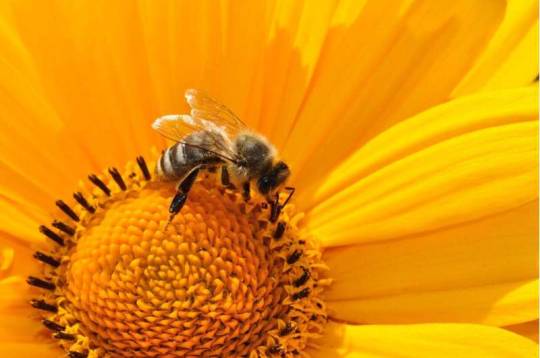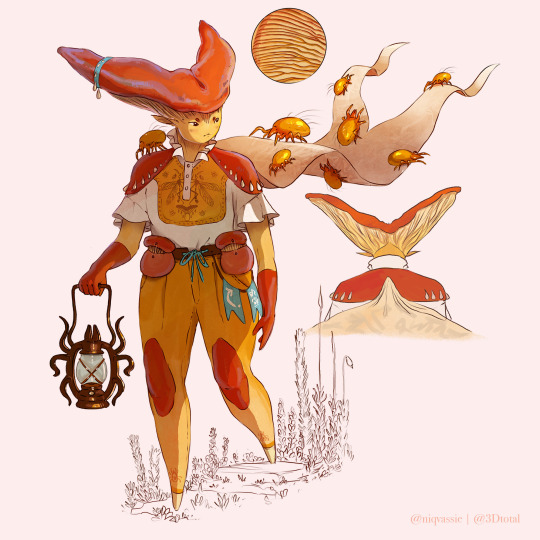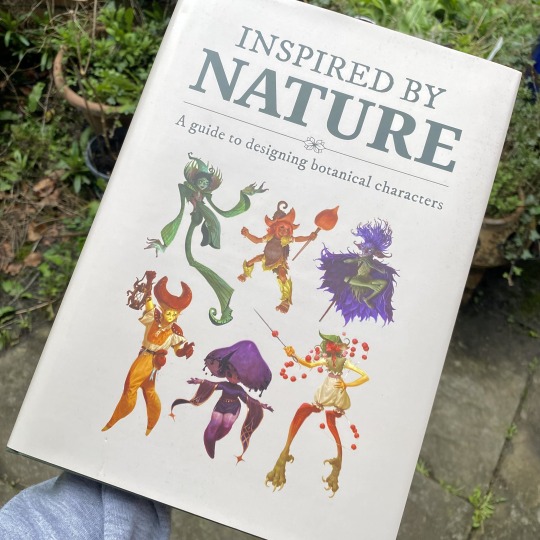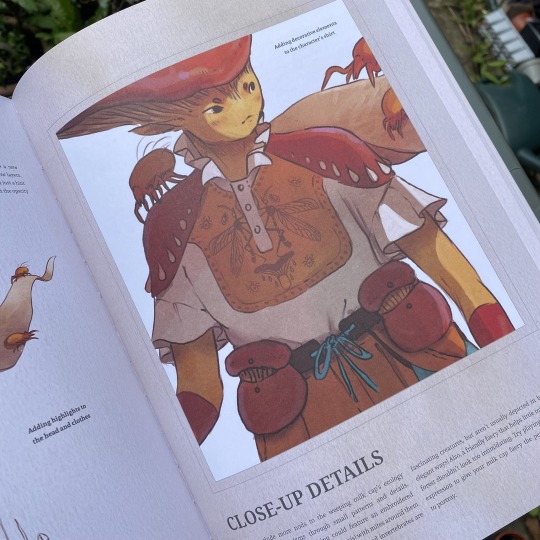#Fungal Ecology
Explore tagged Tumblr posts
Text
MSE seminar today is posponed - but join us for a social hour from 12:00 - 13:00 EDT!
Events will be hosted January – December, 2024, on the last Friday of every month, 12:00 – 14:00 pm ET. Presented over Zoom. After each talk, we will continue the discussions in an informal social meeting with MSE. All speakers and members of the audience are welcome to join the social meeting. Hosted by: Sue Ishaq, MSE, and finacially supported by the University of Maine Institute of Medicine…

View On WordPress
0 notes
Text
Unlocking the Secrets of Saskatchewan's Mushrooms
In the realm of fungi, Mushroom Day takes center stage on April 16th, inviting enthusiasts to delve into the fascinating world of mushrooms. With over 14,000 varieties, these fungal wonders grace dark and damp corners, adding a touch of mystery to the natural world. Mushrooms and fungi Despite their allure, caution is paramount. Harvesting mushrooms requires more than just an appreciation for…

View On WordPress
#biodiversity#Citizen Science#City Nature Challenge#Cosewic#COSEWIC Assessment#Ecological Awareness#ecological balance#environmental stewardship#Forest Biodiversity#Forest Exploration#Fungal Chronicles#Fungal Diversity#Fungal Ecology#Fungal Kingdom#Fungal Kingdom Exploration#Fungal Wonders#fungi#Fungi Appreciation#George Genereux Urban REgional Park#iNaturalist#iNaturalist app#Mushroom Day#Mushroom Discovery#Mushroom Enthusiasts#Mushroom Foray#Mushroom Identification#Mushroom Kingdom Celebration#Mushroom Photography#Mushroom Safeguarding#Mushroom Science
0 notes
Text
A small team of biologists at the University of Bristol has found that black garden ants modify the physical structure of their nests to mitigate infection spread. The group has written a paper describing the experiments they conducted with black garden ants and fungal infections in their lab and posted it on the bioRxiv preprint server. Prior research has shown that some animals change their behavior to avoid spreading infections, whether they be viral, bacterial or fungal. Among those, only humans have been found to alter their surroundings as a way to further protect themselves—people might close off parts of their house, for example, or establish quarantine zones within hospital areas.
Continue Reading.
165 notes
·
View notes
Text






"Caretaking at Comy: Outpost for the Mycelial Young." [Installation]
Ceramic & fungal sculptures by Kai Edwards
#Sci Fi art#eco art#science art#scientific art#ecological artwork#artwork#sculpture#ceramics#mycelium#mushroom#fungi#fungal#mycophile#mycology#foraging#aesthetic#science fiction#original artwork#fine art#fine artist#ecologist#mycologist#mushroom growing#mushrooms#funga#fungus
10 notes
·
View notes
Text
Frog ‘Saunas’ Help Endangered Frogs Survive A Deadly Fungal Pandemic, via Macquarie University + University of Melbourne, published by Nature
by @GrrlScientist
2 notes
·
View notes
Text
soil fungi my beloathed often new species are growing on plates in my lab!!!
i keep hitting dead ends in Funguild, NCBI etc bc no one's updated things so old names (sometimes just a genus and a number lol) have links to old names...
and a decent chunk of my sequencing matches are always Kingdom Fungi and don't match anything else!!! who are you!!!
It's not actually that hard to discover a new species
#phd life#ecology#biology#sequencing#idk what to tag apparently there aren't ppl talking about funguild regularly on tumblr :(#not that it's the be all end all of fungal traits or entirely accurate even but it's a cool site and database#same with index fungorum and encyclopedia of life they don't always all have the same things even though they try#because there's just SO MANY and we keep rearranging the taxonomy as we get better at it
304 notes
·
View notes
Text
Making worlds is not limited to humans. We know that beavers reshape streams as they make dams, canals, and lodges; in fact, all organisms make ecological living places, altering earth, air, and water. Without the ability to make workable living arrangements, species would die out. In the process, each organism changes everyone’s world. Bacteria made our oxygen atmosphere, and plants help maintain it. Plants live on land because fungi made soil by digesting rocks. As these examples suggest, world-making projects can overlap, allowing room for more than one species. Humans, too, have always been involved in multispecies world making. Fire was a tool for early humans not just to cook but also to burn the landscape, encouraging edible bulbs and grasses that attracted animals for hunting. Humans shape multispecies worlds when our living arrangements make room for other species. This is not just a matter of crops, livestock, and pets. Pines, with their associated fungal partners, often flourish in landscapes burned by humans; pines and fungi work together to take advantage of bright open spaces and exposed mineral soils. Humans, pines, and fungi make living arrangements simultaneously for themselves and for others: multispecies worlds.
Anna Lowenhaupt Tsing, The Mushroom at the End of the World: On the Possibility of Life in Capitalist Ruins
161 notes
·
View notes
Text
Good News - August 15-21
Like these weekly compilations? Tip me at $kaybarr1735 or check out my new(ly repurposed) Patreon!
1. Smart hives and dancing robot bees could boost sustainable beekeeping

“[Researchers] developed a digital comb—a thin circuit board equipped with various sensors around which bees build their combs. Several of these in each hive can then transmit data to researchers, providing real-time monitoring. [… Digital comb] can [also] be activated to heat up certain parts of a beehive […] to keep the bees warm during the winter[…. N]ot only have [honeybee] colonies reacted positively, but swarm intelligence responds to the temperature changes by reducing the bees' own heat production, helping them save energy.”
2. Babirusa pigs born at London Zoo for first time

“Thanks to their gnarly tusks […] and hairless bodies, the pigs are often called "rat pigs" or "demon pigs” in their native Indonesia[….] “[The piglets] are already looking really strong and have so much energy - scampering around their home and chasing each other - it’s a joy to watch. They’re quite easy to tell apart thanks to their individual hair styles - one has a head of fuzzy red hair, while its sibling has a tuft of dark brown hair.””
3. 6,000 sheep will soon be grazing on 10,000 acres of Texas solar fields

“The animals are more efficient than lawn mowers, since they can get into the nooks and crannies under panel arrays[….] Mowing is also more likely to kick up rocks or other debris, damaging panels that then must be repaired, adding to costs. Agrivoltaics projects involving sheep have been shown to improve the quality of the soil, since their manure is a natural fertilizer. […] Using sheep instead of mowers also cuts down on fossil fuel use, while allowing native plants to mature and bloom.”
4. Florida is building the world's largest environmental restoration project

“Florida is embarking on an ambitious ecological restoration project in the Everglades: building a reservoir large enough to secure the state's water supply. […] As well as protecting the drinking water of South Floridians, the reservoir is also intended to dramatically reduce the algae-causing discharges that have previously shut down beaches and caused mass fish die-offs.”
5. The Right to Repair Movement Continues to Accelerate

“Consumers can now demand that manufacturers repair products [including mobile phones….] The liability period for product defects is extended by 12 months after repair, incentivising repairs over replacements. [… M]anufacturers may need to redesign products for easier disassembly, repair, and durability. This could include adopting modular designs, standardizing parts, and developing diagnostic tools for assessing the health of a particular product. In the long run, this could ultimately bring down both manufacturing and repair costs.”
6. Federal Judge Rules Trans Teen Can Play Soccer Just In Time For Her To Attend First Practice

“Today, standing in front of a courtroom, attorneys for Parker Tirrell and Iris Turmelle, two transgender girls, won an emergency temporary restraining order allowing Tirrell to continue playing soccer with her friends. […] Tirrell joined her soccer team last year and received full support from her teammates, who, according to the filing, are her biggest source of emotional support and acceptance.”
7. Pilot study uses recycled glass to grow plants for salsa ingredients

“"We're trying to reduce landfill waste at the same time as growing edible vegetables," says Andrea Quezada, a chemistry graduate student[….] Early results suggest that the plants grown in recyclable glass have faster growth rates and retain more water compared to those grown in 100% traditional soil. [… T]he pots that included any amount of recyclable glass [also] didn't have any fungal growth.”
8. Feds announce funding push for ropeless fishing gear that spares rare whales

“Federal fishing managers are promoting the use of ropeless gear in the lobster and crab fishing industries because of the plight of North Atlantic right whales. […] Lobster fishing is typically performed with traps on the ocean bottom that are connected to the surface via a vertical line. In ropeless fishing methods, fishermen use systems such an inflatable lift bag that brings the trap to the surface.”
9. Solar farms can benefit nature and boost biodiversity. Here’s how

“[… M]anaging solar farms as wildflower meadows can benefit bumblebee foraging and nesting, while larger solar farms can increase pollinator densities in surrounding landscapes[….] Solar farms have been found to boost the diversity and abundance of certain plants, invertebrates and birds, compared to that on farmland, if solar panels are integrated with vegetation, even in urban areas.”
10. National Wildlife Federation Forms Tribal Advisory Council to Guide Conservation Initiatives, Partnerships

“The council will provide expertise and consultation related to respecting Indigenous Knowledges; wildlife and natural resources; Indian law and policy; Free, Prior and Informed Consent[… as well as] help ensure the Federation’s actions honor and respect the experiences and sovereignty of Indigenous partners.”
August 8-14 news here | (all credit for images and written material can be found at the source linked; I don’t claim credit for anything but curating.)
#hopepunk#good news#honeybee#bees#technology#beekeeping#piglet#london#zoo#sheep#solar panels#solar energy#solar power#solar#florida#everglades#water#right to repair#planned obsolescence#trans rights#trans#soccer#football#recycling#plants#gardening#fishing#whales#indigenous#wildlife
133 notes
·
View notes
Text




Here is a little fairy I designed last spring for 3Dtotal's book ‘Inspired by Nature’! 🍄 This character is based on the weeping milk cap and its ecology - their task is to be a bus for forest mites and take them where they want to go. 🌲🌳🚌 The velvety mushrooms of this fungus species are fed upon by both crane fly and mite species. However, these tiny mites are too small to easily walk between isolated mushrooms so they hitch a ride on the backs of visiting flies to find a new meal! This is an interaction called phoresis in biology and similar hitch-hiking mites can often be found on big beetles who feed on animal carcasses too (another patchy food source). Find the book containing the full design process here! It’s a huge book full of so many beautiful floral/fungal characters by some amazing artists ✨
#character design#creature design#character#creature#fairy#faery#fungi#fungus#weeping milk cap#milk cap#mushroom#drawing#art#digital art#painting#artists on tumblr
201 notes
·
View notes
Text
MSE seminar this Friday is posponed - but join us for a social hour from 12:00 - 13:00 EDT!
Events will be hosted January – December, 2024, on the last Friday of every month, 12:00 – 14:00 pm ET. Presented over Zoom. After each talk, we will continue the discussions in an informal social meeting with MSE. All speakers and members of the audience are welcome to join the social meeting. Hosted by: Sue Ishaq, MSE, and finacially supported by the University of Maine Institute of Medicine…

View On WordPress
0 notes
Text
"A rather superficial thought has been going round my head for some time: no one listened to Antonin Artaud, but he was right. We have to get out of the insanity our civilization is creating. But drugs, alcohol, and in fine madness and/or death are no solution; we must find something else.
Meaning is withering…The forms I've known as mine are falling away. My writing is foundering, I’ve nothing interesting to say anymore, nothing worth trying to say…How many psychologists would call me insane if I told them that it feels as though I’ve lost my grip on everything? So that’s what’s driving you to hole up in the mountains!
Yes indeed, and now you’re really losing the plot, because even the mountains are coming apart. Losing cohesion because of melting ice, because of these heatwaves. The handholds are crumbling rocks are falling, this is how it is. And friends are crashing at the foot of the sheer rock face…something inside me is ringing in response, something that hurts and unbalances me.
It’s would have been so easy if my personal unhappiness could be summed up by an unresolved family issue…But no. My problem is that my problem isn’t mine alone. The misery my body is expressing comes from the world.”
Nastassja Martin In the Eye of the Wild
“We live, like all other life forms ��� animal, plant, fungal, bacterial – in the midst of enormously complex networks of semiotic life…A brain in a vat could never generate meaning. What is needed for mind is a living body in a lived world. Place, or umwelt, isn’t incidental. Places, and the tongues that ‘speak’ there, are a central aspect of what makes us. Human linguistic meaning-making in metaphor does not spring brand new and unbidden from the cosmos. It has evolved from natural metaphors and meanings which are gathered in evolutionary layers in all the life forms of this planet. The evolving organism draws on these hidden and nonconscious layers of meaning-making, and so do the poet, the artist and the scientist as they discover new forms of living knowledge. [..]
When meanings become unstable, inventiveness through exchange may be possible, and new habits may be made and laid down. But when reciprocity is refused or absent, then we are nothing but a chaos of broken relations. With that, we are in the presence of what the Estonian semiotician Ivar Puura called semiocide. Carelessness over meanings – in nature and in culture – is a symptom of relational sickness.”
Wendy Wheeler “In Other Tongues: Ecologies of Meaning and Loss”
34 notes
·
View notes
Text
Biologists have long known mushrooms of the genus Mycena, commonly known as bonnet mushrooms, as fungi that live off of dead trees and plants. New research from the University of Copenhagen demonstrates that bonnets can also find their ways into young, healthy trees and plants, where they try to cooperate. In doing so, they have made an evolutionary leap which challenges our understanding of the ecological roles of fungi. Fungal spores float through the air. Thin strands of their mycelia creep along surfaces. They seek out defenseless hosts to wrap themselves around in webs of fungal growth. Their victims can then be used to satisfy their own need to devour and disperse. That fungi have begun to invade the living is a horrific thought for anyone who ever thought that fungi only dined upon the dead. Or, at least for those who stream The Last of Us, a post-apocalyptic series in which humans battle relentless fungal-infected zombies. Fortunately, reality is rarely so dramatic. But after Danish mycologists targeted local Mycena, known as bonnet mushrooms, it turned out that certain similarities emerged nevertheless. New research from the University of Copenhagen's Department of Biology suggests that this genus of fungi, which has traditionally been considered saprotrophic—i.e., a decomposer of nonliving organic matter—is in the midst of an evolutionary leap. The research is published in the journal Environmental Microbiology. "Using DNA studies, we found that Mycena fungi are consistently found in the roots of living plant hosts. This suggests that bonnets are in the process of an evolutionary development, from uniquely being decomposers of nonliving plant material to being invaders of living plants, under favorable conditions," explains Christoffer Bugge Harder, the study's lead author.
Continue Reading.
430 notes
·
View notes
Text
I don't remember if I've mentioned it here before or if I only babble about it on discord as is my wont, but the discovery of the fungal rope last episode further solidifies my theory that whatever continent was plucked from Exandria to make Ruidus, that landmass was the original home of the elder brains like All Minds Burn, and that Predathos is filling an ecological niche on Ruidus that is MEANT to be filled by an elder brain. I suspect that planting All Minds Burn's seed on Ruidus will not be introducing an invasive species, but actually combating one. After all, the conditions needed for the seed, and for something like that fungus, are the same, and the red storms of Ruidus seemed to call to All Minds Burn iirc.
#critical role#cr3#cr theories#i keep wondering if mindflayers and reilorans are just a brancjed evolutionary chain
68 notes
·
View notes
Text
This cropped up a few months back and I still am not quite sure what to think of it. I don't remember enough of my high school Latin to be able to figure out why fauna and flora end with -a and fungi with -i. Fauna and flora are singular terms referring to a collection of animals or plants, respectively, but fungi has been doing double duty as both the collective singular (all the various fungus species in a given group) AND also the collective plural (here are three individual species of fungus referred to together.) I suppose the proposal is to give the fungus kingdom its own collective singular term ending in -a.
Which, from a linguistic perspective, makes sense. But I'm not sure how much it would resonate with the general public. People already use "fungi" in both manners, and I don't know whether trying to push "funga" as a new term is going to be effective in raising awareness of the need to include fungi in conservation efforts.
The thing is, fungi are still often erroneously considered to be in the plant kingdom by a lot of people (and it doesn't help that in culinary terms they're usually just categorized as a vegetable.) The whole idea that if you pull up a whole mushroom instead if cutting it means you'll "kill the whole fungus" is a prime example of how even foragers don't always understand the differences between a plant and a fungus, let alone grok that they're in different kingdoms entirely.
What I do agree with, though, is the need to not just ignore fungi when we're talking about conservation, habitat restoration, etc. Of the three kingdoms--animals, plants, and fungi--the fungi are the least-studied and least-understood when it comes to their roles in ecosystems and their conservation needs, to say nothing of the threat of extinction. The IUCN does have about 800 species listed with various statuses ranging from critically endangered to data deficient, but that's a drop in the bucket compared to just under 150,000 described species, and an estimated 2-4 million species total worldwide.
Until we know more specifics, both on fungal ecology and conservation statuses, we should assume that damage to an ecosystem--particularly common fungal substrates like soil and decaying wood--poses a real threat to the fungi that live there.
#fungi#fungus#ecology#conservation#environment#environmentalism#mushrooms#nature#science#scicomm#Latin#flora#fauna#funga
88 notes
·
View notes
Text
Introduction: Admin Lyn, Team Sigma.
It appears I must introduce myself to the remaining rotomblr users. Welcome to my blog.
I am Lyn Gale, the admin of Team Sigma. We are dedicated to retaining life in our world, regardless of the developments in the changing environment. I am currently researching a cure for a fungal infection, similar to parasect’s.
An image is attached of myself. So you can rest assured I am truly who I say I am.

Please remain polite with me.
[[ OOC BELOW FOR TRIGGER WARNINGS AND BASIC INFO ]]

Hiya! I’m Teddy, the Mun! I’m 16, and obsessed with this 40 year old evil science dork. He’s not doing anything really messed up but he’s 100% a mad scientist. I’m warning you now, he’s kinda a shade of gray.
WARNINGS !!
Apocalyptic / Dystopian Themes (Team Sigma is basically the dystopian capitalism team who preserve the rich and turn a blind eye to the poor) (will be tagged in original posts)
Transphobia (NOT from Lyn. He is transmasc. Some of the team leaders are horrible. Will ALWAYS be tagged.)
Lyn can be manipulative when he feels he’s in danger.
It will at MOST be mid stakes. no death, no sexual themes, nothing nsfw at all. He will at most mention zombies and occasionally beef with his bosses about like, basic decency.
World %& OC info:
Lyn is a higher up in Team Sigma, which rules most of Unova after several ecological disasters.
Parasects were wiped out, leaving their hosts to spread to other pokemon and humans, which is basically the most dangerous thing you’ll see on this blog.
Lyn is actually pretty sweet if you give him a chance but PLEASE be mean to him it’s so much funnier
Mail Types:
Pokemon Mail / Malice : Open
Musharna Mail / Malice : Only if you’ve interacted before. Magic Anons: no. I’m sorry but magic anons scare me <:3
ANYWAYYYSSSS keep yourself safe and happy. I love you.

EDIT: Lyn Ref


#tw dystopian#tw apocalypse#pokemon rp#pokereality#poke irl#pokepocalypse#pokemon irl#rotumblr#rotomblr#tw mid stakes pokeblogging#mid stakes pokeblogging
19 notes
·
View notes
Text
TIGHNARI: # the roots of ambition.

A found-family adventure in the rainforests of Sumeru.
Summary. While chasing field research in fungal ecology for your Akademiya studies while mitigating your Eleazar symptoms, you are stumbled upon by a squad of Forest Rangers to "protect" you. The General Watchleader, as he hates to be called, takes an interest in you and your topic, and offers to help you research more safely and efficiently. However, to your horror, he starts to become more than a research partner. As you push yourself into increasingly dangerous circumstances in the name of science, what will become of the ecology of your new friends and you? ⚘
Word count. ~11k across five chapters. Genre. General audiences, platonic/qpr. Other tags. Chronic illness/disability, gender neutral reader, pretending biology hasn't always been my worst subject, discussion of death, happy/contemplative ending, Collei is in every chapter (because: of course she is!).
Author's note: Happy late disability pride month! Here's a fic that originally was meant to be "romantic" but I realized the ideas I was writing about were just about... having intimate familial relationships. Call it queer. Maybe the real romance was the friends we made along the way. Here's a story about appreciating all types of life & love! ⸙

Posting schedule. Weekly from Friday, Aug 2, 2024. Chapters. [will be linked upon individual release]
⸙ CHAPTER I.
⸙ ... CHAPTER II.
⸙ ... ... CHAPTER III.
⸙ ... ... ... CHAPTER IV.
⸙ ... ... ... ... ... CHAPTER V.
[ ⸙ RESOURCES. ]

GENSHIN MASTERLIST
#the roots of ambition.#tighnari & reader#genshin platonic#genshin longfic#genshin adventure#sumeru fic#tighnari platonic#genshin series#collei fanfic#tighnari angst#genshin impact sickfic#genshin x disabled!reader#gi x gn!reader#genshin lore
40 notes
·
View notes